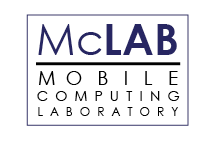Visiting in virtual reality
The big question
Are 360-degree cameras useful in creating educational materials and/or media for future viewing?
Overview
We have looked at flat images of events since the advent of the camera. While a picture may well be worth 1,000 words, it still leaves us flat. Literally and figuratively.
360-degree video and imagery is much more immersive. The viewer can look around, much like in the real world, and examine the total environment. In some cases this is enough, but XR also gives us the ability to add clickable hotspots to the images that contain additional information. This turns a 3D image of a simulation laboratory into a guided tour of the lab. It turns a single 3D image into a room in a building from which the viewer can explore further rooms.
Goals and objectives
Determine the educational value of 360-degree images
- Select courses that could benefit from 360-degree tours and work with the faculty to define the needs.
- Record 360-degree images and augment them with hotspots to denote important concepts.
- Test with the students and collect feedback.
Determine the value of 360-degree video
- Select events that may make valuable 360-degree videos.
- Record the videos and post where they can be viewed.
- Collect feedback and assess the value of the videos.
Piloting the idea
Pilot work
360-degree cameras were used to record various events and take still images of rooms and areas. Here is what happened at the pilot school.
Participants
The following schools are contributors to this pilot:
Winona State University
360-degree video was taken at a graduation ceremony. The recording happened right before the pandemic and has not been evaluated for its value.
360-degree still images are being taken in labs in the Nursing areas. These images will be edited to include hotspots and will be used a training tools in future classes.
Results
A listing and review of the cameras used in the pilot is TBS.
Assessment vehicle
Assessment is incomplete at this time.
Recommendations and observations
To be supplied...
Tell us your story
- Do you have experience with augmented or virtual reality in the classroom?
- Did something in this article help you make a decision about your curriculum or cause you to try something new?
- Do you have questions about this project or the results?
Please share any experience, reactions, or questions with us so we can add to the content of this article and make it more relevant for the next person. Email your input to nthomes@winona.edu and we will add it to this article. Thanks.
More information
Want more information on the McLAB or have an idea you would like to pursue? Contact Norb Thomes at (507) 457-5043 or nthomes@winona.edu.
Overview of the McLABRead the full overview of the Mobile Computing Laboratory project. |
Related wiki topics |
